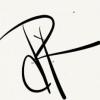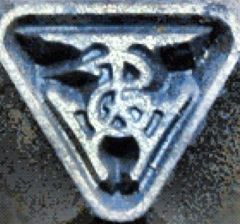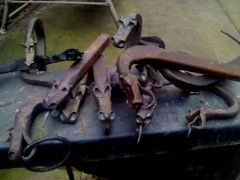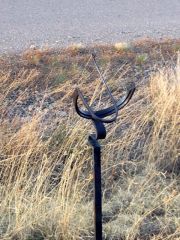-
Posts
156 -
Joined
-
Last visited
Content Type
Profiles
Forums
Articles
Gallery
Downloads
Events
Everything posted by RogueRugger
-

Purchase advice
RogueRugger replied to RogueRugger's topic in Power Hammers, Treadle Hammers, Olivers
Thanks Frosty - Sorry, I should have been more specific. i am absolutely not looking for advice on how to use it. Rather, insight into what I should be looking for in the initial visual inspection. I have experience in breaking things for a living so I have some (common?) sense of what to look for. However, I was interested in opinions/insights related to any LG unique issues that might show up on a visual . Just trying to do as much homework as I can. Once I'm comfortable with the initial look-see, I'll pester some folks around here for additional 'advice'. Thanks for the quick feedback and best for the new year. -
I am about to look at a 25# Little Giant. I'm very much a newb at this level of smithing and this is going to be my first adventure in power hammers. I've used a power hammer twice for very small jobs. I know nothing about this particular machine other than it is 'in great working order'. obviously :) I continue to skim the discussions here and videos around the net to try to get a bit smarter on the whole thing, but still feel pretty ignorant. Once I have the serial number more background should be available from the little giant folks, but are there some things can be checked visually when I get visitation rights? Here's my short list, based on a similar discussion in this forum for another style hammer: - cracks in housing - 'slop' or 'play' between parts (although I have to admit I don't have a clue what acceptable 'slop' means) - holes with nothing attached (i'm going to take along a couple of pictures of whatever variations there might be for the 25#) I'm in no great rush or need for an immediate purchase and won't likely be able to seriously use it until summer at the earliest. Just like to avoid missing a good deal like I did earlier this year with another LG in Arizona. Thanks for your patience, ...Dave
-
-

Show me your Bottle Openers!
RogueRugger replied to Arbalist's topic in Blacksmithing, General Discussion
@Du7ch: And it appears that you had a try with some chiles! An excellent pairing with the bottle openers and a very nice start overall.( No doubt they are red AND green for a true Christmas serving.) -
Thanks for the link - very nice; and no there's no pressing urgency for the info. It will be greatly appreciated when you get it together. Cheers.
-
@bomlin : I'd like to eventually get to a turret-size (did I say this looked awesome?), but something smaller is likely a better place for me, a relative newb, to start. I figure I can alway pass it off as a kinetic sculpture. :) ... And a link to your blog would be great.
-
Well, this thread took me down a rabbit hole- so much great info. A clock is on the top of my list of projects once I get in a real shop set up and I haven't had an idea of where to even start on a design. @bomlin: this is super and thanks for sharing. I've just started to gather info- can you suggest some background material? @mr thomas: I wasn't familiar with the book by Moxon nor the Babel project. Many thanks.
-
As Mr M pointed out, grinding or machining will sometimes induce magnetism. With no firm basis in fact, beyond the fact that I stayed in a Holiday Inn last night, I've always understood it to be the result of molecular alignment that happens during fine machining. A lot depends on the carbon content of the steel: tough to do with raw iron, and ability to induce magnetism increases with the carbon content.
-
Ditto on the rasp legs! They give the table a look like they are 'alive' or something.
-
-

buffalo (?) forge purchase/repair advise
RogueRugger replied to RogueRugger's topic in Solid Fuel Forges
Rich C, thanks for the additional suggestions, all good points about wetting the coal. As much as it sounds like an excuse, I think my problems were exasperated by a weak bag of coal and a tired blower. The rivet forge purchase is on hold while the seller decides if she wants to fill it with plants again. Sigh. -
Finally catching up on some of these projects. As rwolfe noted, the flow of the curves really accents the work. Nice!
-
Great stuff Frank, as always. I'd lost track of Winslow a few years ago. Will have to track him down.
-

buffalo (?) forge purchase/repair advise
RogueRugger replied to RogueRugger's topic in Solid Fuel Forges
TP, it could easily be an air issue. I'm going to borrow a blower (and maybe a full forge) and see if that makes a difference. My tuyer (and entire fire pit) are pretty standard, maybe an older Centaur. (Don't have access to it right now). I'm still leaning toward operator error with a black shadow of a coal issue. -

buffalo (?) forge purchase/repair advise
RogueRugger replied to RogueRugger's topic in Solid Fuel Forges
Thanks to all for the suggestions. I'll do some digging on the kitty litter while I track down a more rigorous solution. Regarding the comment by VaughnT. It sounds to me like you're heaping the coal on to the forge table and watering the perimeter to maintain shape and size of the hot zone. I don't want to get too far off topic (probably because i want an excuse to get this other forge), but I really do want to figure out my original fire pot. My first classes were intentionally with coal so this has been a bit frustrating. This isn't rocket science and I've never had problems with a coal forge before. However, I'm sure that the major problem is operator error coupled, perhaps, with a bag of grumpy coal. The coal is pea-sized which is a bit smaller than I'm accustomed to; I cannot seem to get a good bed of coals to develop beyond an inch or so of the grate. As you say, I actually am 'heaping' the coal on the forge table and building a perimeter of wet coal (soaking the coal before I put it on). From your comment it sounds like I shouldn't be doing that? (I've actually purchased some fire brick to potentially help control the size.) Meanwhile, I'm going to grab a bag of charcoal from the store and give that a try. And pick up a couple of new bags of coal... just in case. Thanks again. -
Background: A couple of years ago I purchased a solid fuel forge with a brand new fire pot and a old working Champion blower. I've finally moved to a (temporary) location where I can use it. Unfortunately, the fire pot is almost 5" deep which seems to be impractical for a coal fire and I'm not really keen on going to charcoal. For some reason, I have a real hard time controlling/maintaining a good coal fire in this. [i got all this for $150 so I don't have a lot invested.] I've decided to track down a smaller forge that I can use for small to moderate size stuff like bottle openers, animal heads, sundial parts, etc. etc. I ran across what I think is a Buffalo treadle forge. (Let me add that I have lusted over this style forge for a long time. Some childhood memory of catching my fingers in my grandma's sewing machine no doubt) I ran across this forge at a flea market where the owner indicated that it had been in her living room as a plant holder for a dozen years. The forge seems to be in relatively good condition (new belt, a new tuyere, and some minor cleanup). However, as you can see from the pictures there are two cracks on the table. The first is in the tuyere area and another crack is on the side. I don't know much about forges in general and even less about these 'rivet' size forges. Any advice on the impact of these two flaws on the usability of this forge would be greatly appreciated. [FWIW - I know it doesn't mean much but the price is likely in the area of $150 with some room for negotiation.] Thanks in advance, Dave https://flic.kr/p/p47Px4
-

A spoon making Sunday
RogueRugger replied to Ohio Rusty's topic in Blacksmithing, General Discussion
This looks great. The bowl is really uniform and the transition from bowl to handle is very natural. I still can't quite get the hang of it, and I now have more flux spoons than I could use in two lifetimes. -
The strikers look great, the simplicity of the teardrop would make great candidate for a multipurpose tool. Probably slightly off topic but, short of walking around wacking at various stones from around the yard (which a certain appeal for stress relief) is there a suggested method of identifying a good flint stone?
-

Left or right handed?
RogueRugger replied to Everything Mac's topic in Blacksmithing, General Discussion
FWIW RadioLab had a nice podcast on handedness: http://www.radiolab.org/story/whats-left-when-youre-right/ Discussed are various myths and theories, including the impact on boxing and the handedness of parrots. -

Left or right handed?
RogueRugger replied to Everything Mac's topic in Blacksmithing, General Discussion
Very much not suggesting a change in the survey, but here is a link to the handedness survey used in my other life: http://www.brainmapping.org/shared/Edinburgh.php Just thought it might be of interest to see the variation in how handedness can vary across a wide range of tasks. Personally, nothing is more frightening than changing hands when shaving with a straight razor. -

Blacksmithing gems and pearls
RogueRugger replied to Glenn's topic in Blacksmithing, General Discussion
On the Belgium display where my daughter teaches 2nd grade. -
The joinery is very nice, really clean and the proportions of the basket are just right. Really fine work. Weight is not an issue but I'm curious as to how much it weighs?
-
-
Without going in geek speak with things like half twisted cylinders and ouroboros, and admitting I'm the newbest of newbs here, here's my take. First, there's a material energy thing going on that will make radii smaller than a certain amount very tough (but not impossible) to do smoothly around a mandrel, especially if you do it cold. You can see this by cutting out a strip of paper and trying it. As I think someone along the way hinted at, I'd do the 90 twist on the same length, same dimensional material. This will get you a template of sorts that captures the change in rotational angle evenly distributed over the length of the strip. You know a few of the angles along the length: 45 at 1/2 length, 22.5 @1/4, 67.5@ 3/4. Then, as someone else suggested, I'd use this as a guide for the slow process of heat/bending fork/heat/etc. As with an Archimdean or geometric spiral, I suspect you will be able to tell when it doesn't look quite right, but by "rolling" the straight guide along the outside edge as you bend, it will keep you honest. FYI- I think there was a candle holder at the ABANA 2012 show that had something similar. I could be mis-remembering.
-
coldironkilz: a bit late, but I just finished cleaning up a #75 post vise using an electrolysis setup. Worked great. Happy to share pics, lessons learned, corrections to some poor advice on electrolytes on youtube, etc.



